National Highways’ has set out plans to deliver a digital twin of the UK’s road network that can predict the time and location of potholes and other maintenance issues
The government-owned highways agency has revealed plans to revolutionise roads, which include intelligent road materials able to repair themselves and more connected and autonomous plant.
National Highways executive director of strategy and planning, Elliot Shaw, said: “We are at the beginning of a digital revolution on our roads network, a once-in-a-century transformation which will fundamentally change how our roads are designed, built, operated and used.
“The Digital Roads journey, the strategy that will create the roads of the future, is huge. It covers every aspect of the roads infrastructure from design and construction, to how roads are operated to the changing experience for all road users.
“Digital Roads will make our roads safer and greener. Improvements and maintenance will be delivered more quickly with less disruption and road users will have a far better end-to-end journey experience, with savings on time and the cost of travel.”
Data-rich digital twins
National Highways is laying the foundations of the Digital Roads vision with several ambitious partnerships working at the forefront of technology.
The road twinning system is being developed in collaboration with UK Research and Innovation (UKRI), Engineering and Physical Sciences Research Council (EPSRC), the EU MSCA COFUND programme, construction and engineering company Costain and the University of Cambridge. It will see drawings and static models replaced with digital versions that can identify when maintenance is needed.
The system is being developed thanks to two grants – the £8.6m EPSRC Digital Roads Prosperity Partnership grant and the £6m EU MSCA COFUND Future Roads Fellowships programme.
The University of Cambridge principal investigator of these grants, Dr Ioannis Brilakis, said: “It is high time the transportation infrastructure sector embraces digital transformation.
“We should strive to replace drawings and static 3D models with dynamic and data-rich digital twins, pdf documents with databases, file exchange with cloud permissions exchange, passive materials with smart materials able to sense and heal themselves and automate all manual routine maintenance.
“All this is possible on a data science foundation, able to generate rich, data-driven insights to help us make better decisions.”
Combining ‘live’ data from intelligent materials in the existing road surface with a digital twinning system that visualises the road and its condition will identify when maintenance work is needed, with roads able to repair themselves using self-healing materials.
This will dramatically reduce the need for time-consuming and costly on-site inspections, prevent unnecessary delays to drivers and reduce the emissions generated by roadworks.
Also, in use or being developed are connected and autonomous plant, offsite fabrication and modular construction methods.
As well as reducing disruption for drivers, these steps will reduce the associated carbon emissions by around 50% and help to meet the target of zero injuries or deaths on the network by 2040.
The Digital Roads vision for the strategic road network supports the government’s ambition of ‘the UK being a world leader in shaping the future of transport’ and supporting Britain’s growth.
‘Creating greener, smoother, safer journeys’
Roads minister Baroness Vere, said: “From digital road models that can predict where maintenance is needed on the real-life road network, to self-repairing road surfaces, and automated cone laying machines, we’re committed to keeping the UK at the forefront of technological developments.
“I’m therefore delighted that National Highways’ vision reflects this, benefitting road users for many years to come with greener, smoother, safer journeys.”
The vision for Digital Roads also goes beyond 2025 and looks forward to 2050 and beyond. Freight platooning, personalised in-vehicle messaging as well as vehicles sharing data, and decluttered roads free from signage – these are some of the ambitions for the roads of the future.


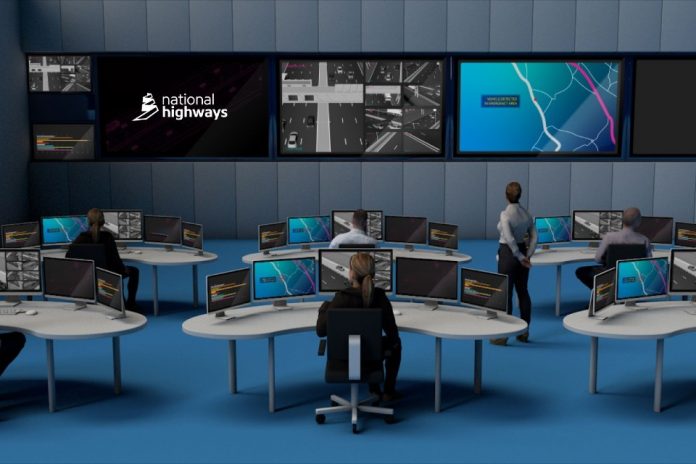

![[VIDEO] HS2 completes 4,600-tonne viaduct slide across M6 The HS2 team completed a 17-hour long operation sliding the viaduct structure across the M6 without closing the motorway](https://www.pbctoday.co.uk/news/wp-content/uploads/2025/12/M6-South-viaduct-slide-taking-place-across-a-live-motorway-December-2025-218x150.jpg)

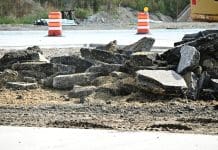
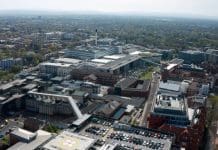

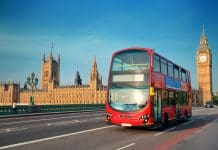
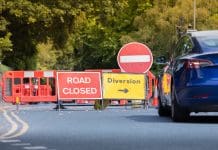

![[VIDEO] Heathrow’s third runway plan wins out over Arora London, United Kingdom – May 31, 2023: A commercial airliner taking off at London's Heathrow Airport, representing plans for a third runway](https://www.pbctoday.co.uk/news/wp-content/uploads/2025/11/iStock-2143084103-218x150.jpg)

